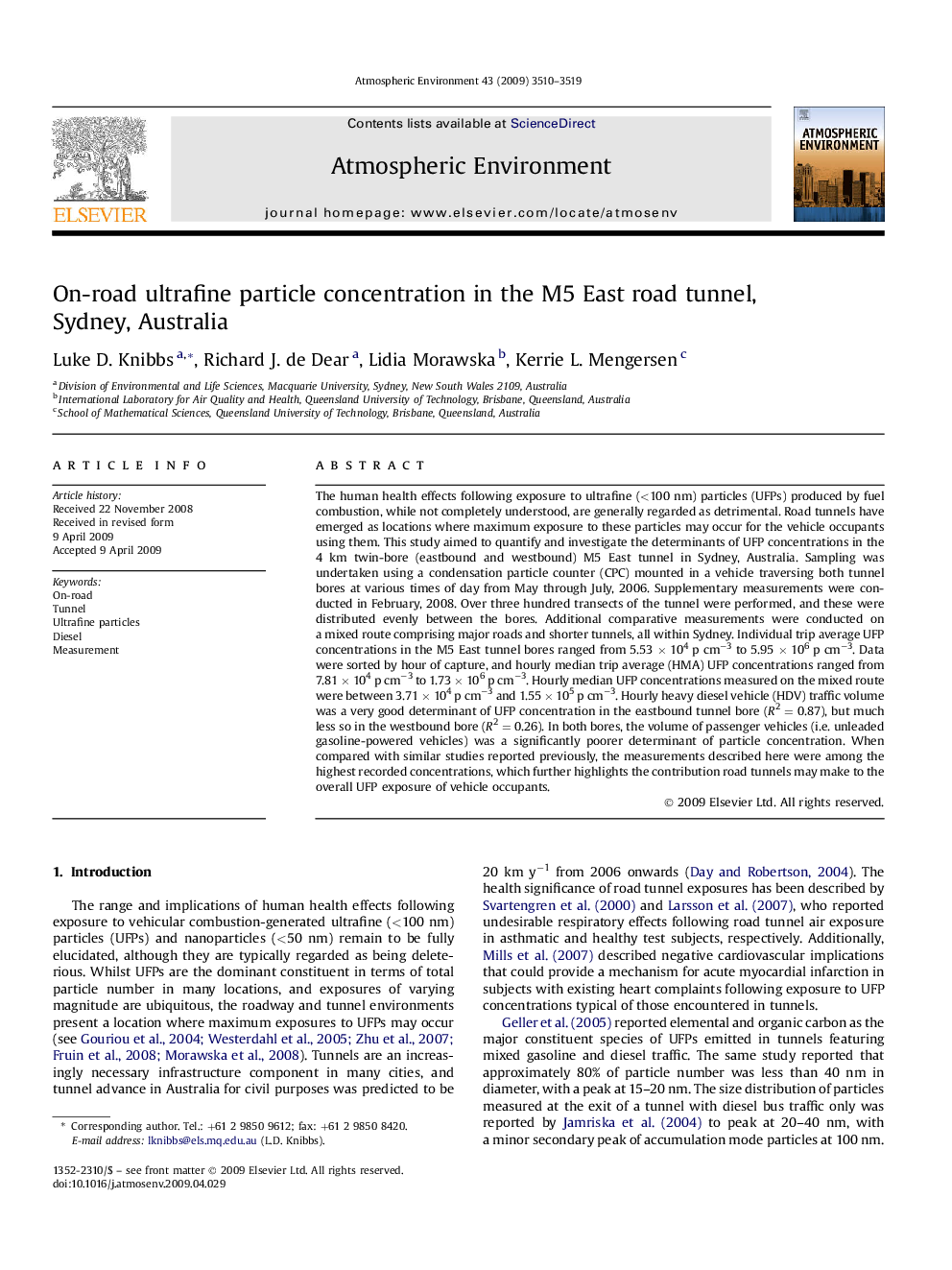| Article ID | Journal | Published Year | Pages | File Type |
|---|---|---|---|---|
| 4440892 | Atmospheric Environment | 2009 | 10 Pages |
The human health effects following exposure to ultrafine (<100 nm) particles (UFPs) produced by fuel combustion, while not completely understood, are generally regarded as detrimental. Road tunnels have emerged as locations where maximum exposure to these particles may occur for the vehicle occupants using them. This study aimed to quantify and investigate the determinants of UFP concentrations in the 4 km twin-bore (eastbound and westbound) M5 East tunnel in Sydney, Australia. Sampling was undertaken using a condensation particle counter (CPC) mounted in a vehicle traversing both tunnel bores at various times of day from May through July, 2006. Supplementary measurements were conducted in February, 2008. Over three hundred transects of the tunnel were performed, and these were distributed evenly between the bores. Additional comparative measurements were conducted on a mixed route comprising major roads and shorter tunnels, all within Sydney. Individual trip average UFP concentrations in the M5 East tunnel bores ranged from 5.53 × 104 p cm−3 to 5.95 × 106 p cm−3. Data were sorted by hour of capture, and hourly median trip average (HMA) UFP concentrations ranged from 7.81 × 104 p cm−3 to 1.73 × 106 p cm−3. Hourly median UFP concentrations measured on the mixed route were between 3.71 × 104 p cm−3 and 1.55 × 105 p cm−3. Hourly heavy diesel vehicle (HDV) traffic volume was a very good determinant of UFP concentration in the eastbound tunnel bore (R2 = 0.87), but much less so in the westbound bore (R2 = 0.26). In both bores, the volume of passenger vehicles (i.e. unleaded gasoline-powered vehicles) was a significantly poorer determinant of particle concentration. When compared with similar studies reported previously, the measurements described here were among the highest recorded concentrations, which further highlights the contribution road tunnels may make to the overall UFP exposure of vehicle occupants.
